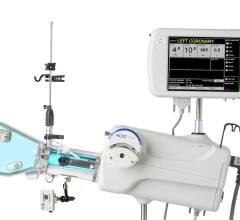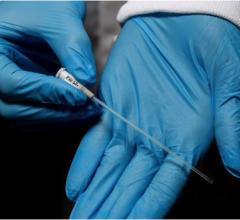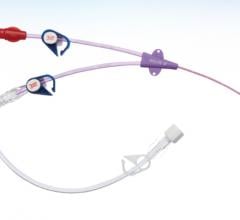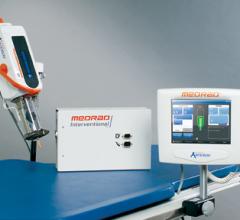March 9, 2007 — Data from a multicenter registry of targeted renal therapy (TRT) in patients at high risk for contrast-induced nephropathy (CIN) were presented at the 32nd Annual Scientific Meeting of the Society of Interventional Radiology (SIR) by Bret N. Wiechmann, M.D., vascular and interventional radiologist, Vascular and Interventional Physicians, North Florida Regional Medical Center, Gainesville.
His presentation, "Targeted Renal Therapy for the Prevention of Contrast-Induced Nephropathy," included analysis of 366 patients enrolled in the Benephit System Renal Infusion Therapy (Be-RITe!) International Registry, a retrospective, observational study conducted at 16 participating institutions worldwide. Thirty-five physicians contributed data, including interventional radiologists, interventional cardiologists and vascular and cardiothoracic surgeons.
FlowMedica’s Benephit Infusion Systems have received U.S. 510(k) regulatory clearance and CE Marking for the infusion of physician-specified agents in the peripheral vasculature including, but not limited to, the renal arteries. The company's products have not received FDA clearance to treat contrast-induced nephropathy or any other condition.
The Be-RITe! Registry is intended to capture "real world" usage patterns, device performance characteristics, clinical outcomes and adverse events data associated with the delivery of TRT with either the Benephit CV (cardiovascular) or Benephit PV (peripheral vascular) Infusion Systems from FlowMedica, Inc. Both catheter systems have received regulatory clearance for the infusion of physician-specified agents in the peripheral vasculature including but not limited to the renal arteries. The Benephit systems have not received clearance to treat CIN or any other condition.
CIN is an increasingly recognized syndrome that occurs in patients whose kidneys are unable to withstand side effects that can be caused by the dye (radiocontrast media) used during minimally invasive cardiovascular and endovascular interventional procedures such as diagnostic angiography, angioplasty, atherectomy, and stent and stent graft placement.
Dr. Wiechmann reported that the renal arteries were accessed bilaterally with the Benephit catheter with a mean time of two minutes in 94 percent of patients. There were a total of four (1.1 percent) reported complications, all resolved without lasting adverse effects. Agents infused using TRT included: fenoldopam mesylate (92.5 percent of patients), sodium bicarbonate (4.7 percent), alprostadil (2.8 percent) and nesiritide (0.6 percent).
A sub-set analysis of the registry population was completed on 189 patients who had available SCr (serum creatinine) follow-up at 48 hours after the intra-renal infusion of fenoldopam mesylate during coronary or peripheral intervention and/or diagnostics.
Based on a validated model for predicting the incidence of CIN published by Mehran et al in the Journal of the American College of Cardiology, 30.6 percent of the 189 patients in the registry population would be expected to develop CIN. "Yet 9.4 percent of the 189 patients who received an intra-renal infusion of fenoldopam developed CIN, an estimated 69 percent reduction in relative risk when compared to the predicted incidence of CIN in the same population," Dr. Wiechmann said.
Major risk factors for the group of patients evaluated in the sub-set analysis included: high incidence of diabetes (60.7 percent); high average volume of contrast dye (155.3 mL), low average creatinine clearance (37.1 mL/min) and high serum creatinine (2.1 mg/dL). When creatinine levels rise it can be a sign that the kidneys are not functioning well. Normal levels of creatinine in the blood range from approximately 0.5 to 1.11 mg/dL.
"Patients in our registry were at very high risk, with some having three or more risk factors, yet fewer than one in 10 developed CIN," Dr. Wiechmann said. "Further studies are needed to support these results."
A randomized, placebo controlled clinical trial to evaluate the efficacy of TRT with fenoldopam to prevent CIN is currently being designed and organized. It is anticipated that SIR and the Cooperative Alliance for Interventional Radiology Research (CAIRR) will be involved in the trial.


 January 11, 2024
January 11, 2024 




